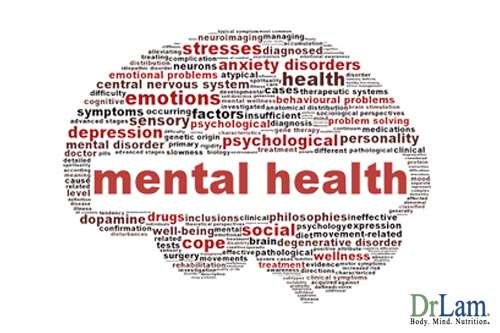 It is a known fact that one in five adults are suffering from some sort of mental impairment. Some cases are very visible, but some are not. Many times a person you love, work with or see every day could be struggling with mental illness and you will never know it. In society today the numbers are staggering as they show that 46 million people in the United States are affected by this silent and often invisible epidemic.
It is a known fact that one in five adults are suffering from some sort of mental impairment. Some cases are very visible, but some are not. Many times a person you love, work with or see every day could be struggling with mental illness and you will never know it. In society today the numbers are staggering as they show that 46 million people in the United States are affected by this silent and often invisible epidemic.
Pamela S. Hyde, administrator of the Substance Abuse and Mental Health Services Administration, part of the U.S. Department of Health and Human Services, said mental illness among adults was defined as having had a diagnosable mental, behavioral or emotional disorder — excluding developmental and substance use disorders — based on criteria specified in the fourth edition of the Diagnostic and Statistical Manual of Mental Disorders. "Although mental illness remains a serious public health issue, increasingly we know that people who experience it can be successfully treated and can live full, productive lives," Hyde said in a statement. "Like other medical conditions, such as cardiovascular disease or diabetes, the key to recovery is identifying the problem and taking active measures to treat it as soon as possible."
Getting help is often both the hardest and the most important thing someone can ever do, and it oftentimes takes delicate intervention from friends and loved ones to push the issue. People with mental illnesses can work and live right along aside anyone without their diagnosis being an issue or even recognizable. It is so unfortunate that many will live with these impairments when they do not have to suffer their lifetimes through.
Only a handful of those affected will actually peruse treatment through mental health offices. Suicide rates are on the rise, but the number of those who have actually seriously considered it is astonishing at 5.5 million last year with a 1.1 million attempted in the US last year alone. It is vital that if you suspect this from anyone that you call the National Suicide Prevention Lifeline 1-800-273-TALK (8255) or go to www.suicidepreventionlifeline.org.
The threat of suicide is very real, and this is especially true throughout the holiday season. Many times the changes you see will be subtle. It is important to reach out even if you are in doubt. With these situations and individuals there is simply no time to waste to fight the invisible epidemic, because sometimes there won’t be a tomorrow to do it.
Symptoms often seen in the mentally ill are also seen in Adrenal Fatigue Syndrome. Depression, anxiety, confusion in thinking all can be seen in both conditions. In adrenal fatigue, these symptoms are brought on by the adrenal glands becoming depleted under conditions of continuing stress. When the adrenals get to this point, they no longer secrete cortisol in sufficient amounts to fight the effects of stress. Unrelenting stress then leads directly to symptoms seen in mental illness also.
 In the NeuroEndoMetabolic (NEM) model of stress response, all body systems are considered when dealing with stress. The body system most involved when symptoms similar to those of mental illness present is the neuro-affective system. The autonomic nervous system, the brain, and the gut are involved. Neurotransmitters, regulated by the autonomic nervous system and made in the gut, stimulate or inhibit neurons. If certain neurotransmitters are too prevalent or not prevalent enough, mental symptoms develop.
In the NeuroEndoMetabolic (NEM) model of stress response, all body systems are considered when dealing with stress. The body system most involved when symptoms similar to those of mental illness present is the neuro-affective system. The autonomic nervous system, the brain, and the gut are involved. Neurotransmitters, regulated by the autonomic nervous system and made in the gut, stimulate or inhibit neurons. If certain neurotransmitters are too prevalent or not prevalent enough, mental symptoms develop.
Stress is a given in our world. Daily, we face situations and people that bring on stress and prompt our bodies to jump into the automatic response sequence to deal with it. Stress tends to be cumulative. Symptoms that come with the first experience with stress don’t simply go away when the source of that stress goes away. In the case of continuing stress, such as is most often encountered in our society, another source follows close on the heels of the first. If it doesn’t overlap the first, that is. Thus, the body doesn’t have a chance to rid itself of the first symptoms before more develop. And this occurs in a repetitive cycle until symptoms that are the same as those in mental illness become chronic. In this way, stress is a major factor in the current epidemic of mental illness.

